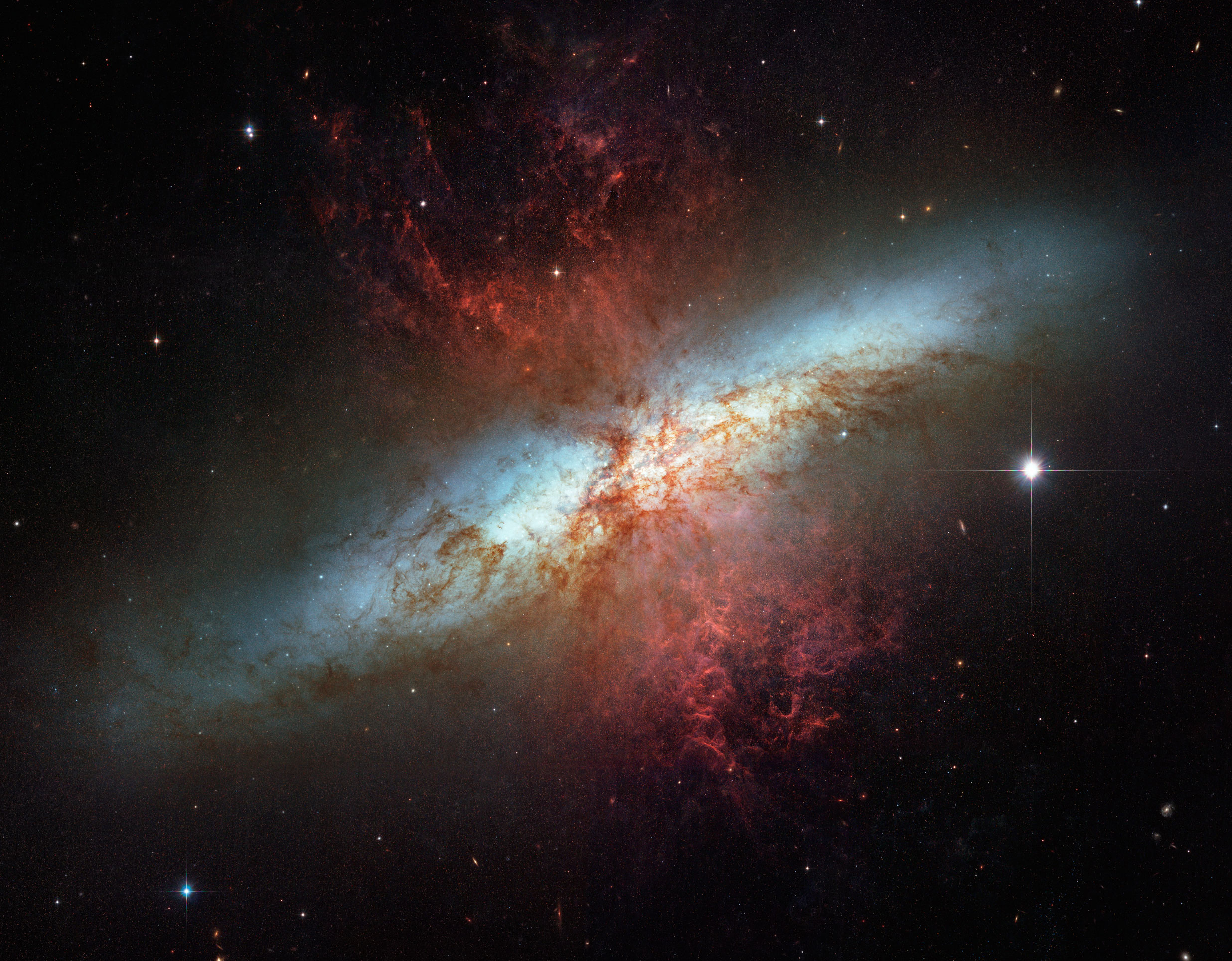Outflows at the Peak Epoch of Star Formation
Outflows are important processes in galaxy evolution because they regulate the sizes, masses and metal contents of galaxies. An outflow is launched when sufficient energy or momentum couples to the gas in the interstellar medium to allow the gas to be pushed out of the galaxy. The energy/momentum can come from either processes associated with massive stars (supernova explosions, radiation pressure) or accretion onto supermassive black holes (Active Galactic Nuclei or AGN). Most of the star formation and black hole accretion activity in the history of the universe occured approximately 8-11 billion years ago (z~1-3), and therefore outflows were also the strongest and most frequent during this epoch.

In Davies et al. (2019), we investigated how the frequency, velocity and mass loading factors of star formation driven outflows depend on the resolved star formation rate surface density ( ΣSFR) within galaxies. We used adaptive-optics assisted near-infrared integral field data from the SINS/zC-SINF AO Survey to map the Hα line emission across 28 star forming galaxies at z~2-2.6, at a spatial resolution of 1-2 kpc. An Hα flux map for one of the galaxies is shown to the left. In regions with outflows, the Hα line has a composite profile, with a narrow component tracing the star formation and a broader component tracing the outflow. The width of the outflow component is a tracer of the outflow velocity, and the total flux in the outflow component is a tracer of the outflowing mass.

We found that the outflow velocity scales as vout ∝ ΣSFR0.34 (see figure below left). This power law scaling is steeper than expected for outflows driven by mechanical energy released by supernova explosions and stellar winds, but flatter than expected for outflows driven by radiation pressure acting on dust grains; suggesting that both of these mechanisms may play a significant role in driving the outflows. We also found that the mass loading factor η, defined as the ratio of the SFR to the mass outflow rate, is positively correlated with ΣSFR, but is relatively low (≤0.5) even at the highest ΣSFR (see figure below right). This may be in tension with cosmological simulations which typically require η ≳ 1 to reproduce properties of the local galaxy population, such as the stellar mass to halo mass relation and the mass-metallicity relation. However, we are only observing one phase of the outflows, and it is possible that a significant fraction of the outflowing material is in other gas phases (particularly neutral and molecular gas).


